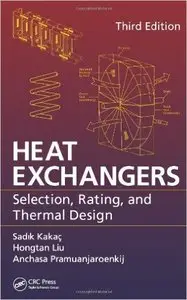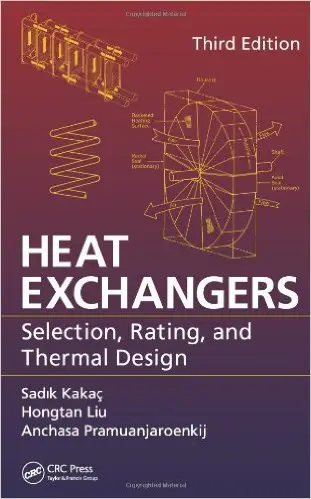Sadik Kakaç, "Heat Exchangers: Selection, Rating, and Thermal Design, Third Edition"
English | ISBN: 1439849900 | 2012 | 631 pages | PDF | 8 MB
English | ISBN: 1439849900 | 2012 | 631 pages | PDF | 8 MB
Heat exchangers are essential in a wide range of engineering applications, including power plants, automobiles, airplanes, process and chemical industries, and heating, air conditioning and refrigeration systems. Revised and updated with new problem sets and examples, Heat Exchangers: Selection, Rating, and Thermal Design, Third Edition presents a systematic treatment of the various types of heat exchangers, focusing on selection, thermal-hydraulic design, and rating.
Topics discussed include:
Classification of heat exchangers according to different criteria
Basic design methods for sizing and rating of heat exchangers
Single-phase forced convection correlations in channels
Pressure drop and pumping power for heat exchangers and their piping circuit
Design solutions for heat exchangers subject to fouling
Double-pipe heat exchanger design methods
Correlations for the design of two-phase flow heat exchangers
Thermal design methods and processes for shell-and-tube, compact, and gasketed-plate heat exchangers
Thermal design of condensers and evaporators
This third edition contains two new chapters. Micro/Nano Heat Transfer explores the thermal design fundamentals for microscale heat exchangers and the enhancement heat transfer for applications to heat exchanger design with nanofluids. It also examines single-phase forced convection correlations as well as flow friction factors for microchannel flows for heat transfer and pumping power calculations. Polymer Heat Exchangers introduces an alternative design option for applications hindered by the operating limitations of metallic heat exchangers. The appendices provide the thermophysical properties of various fluids.
Each chapter contains examples illustrating thermal design methods and procedures and relevant nomenclature. End-of-chapter problems enable students to test their assimilation of the material.



